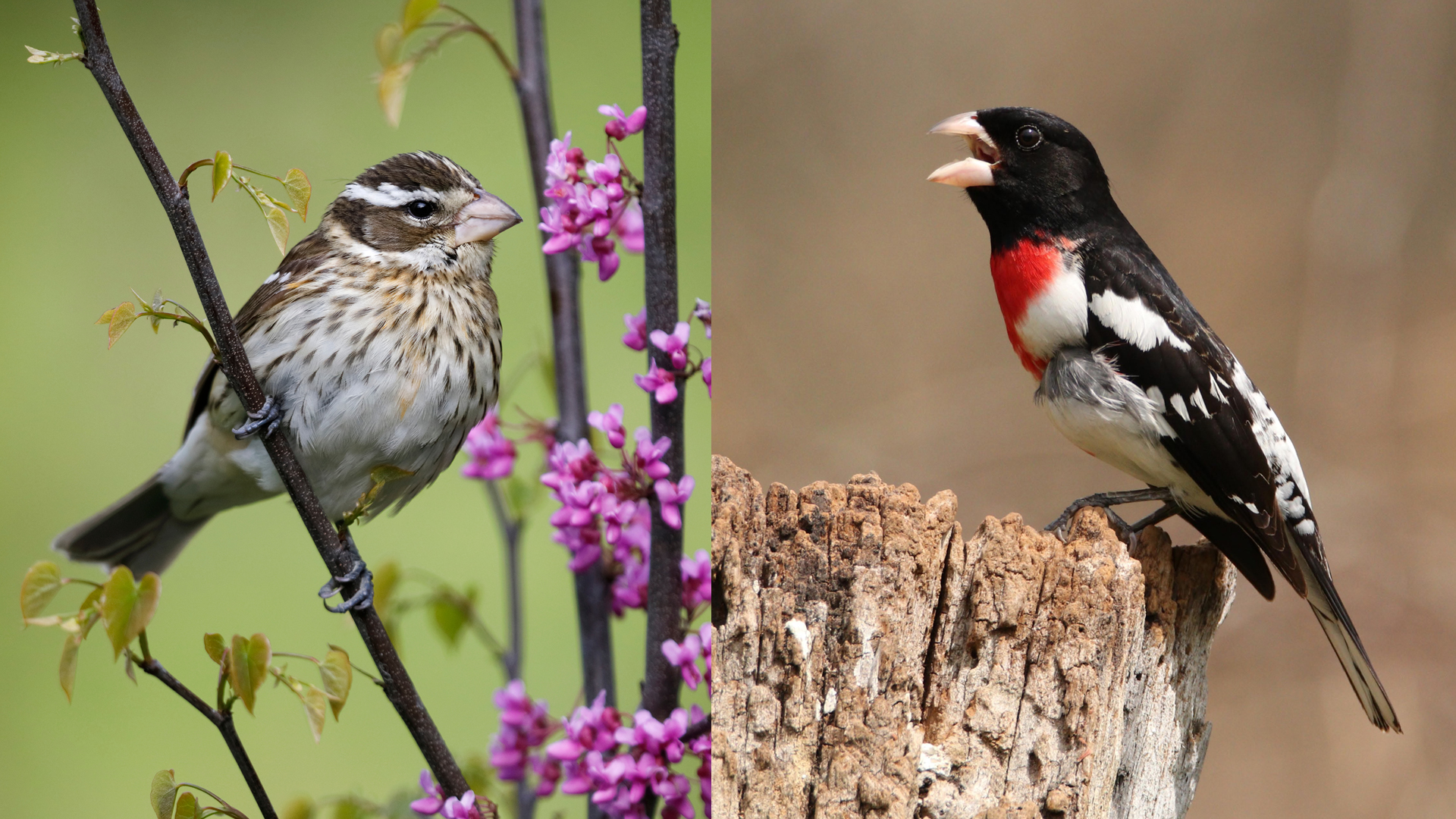Half-male, half-female songbird discovered in Pennsylvania
Finding the rare specimen was like "seeing a unicorn."

Biologists recently made a "once-in-a-lifetime" discovery of a bird that's male on the right side and female on the left.
Researchers captured the bird, a rose-breasted grosbeak (Pheucticus ludovicianus), at the Carnegie Museum of Natural History's Powdermill Nature Reserve, an environmental research center in Rector, Pennsylvania.
Plumage colors usually signal if a grosbeak is male or female, but this bird has both sexes' signature shades. Scientists who captured the bird saw male coloration — pink wing "pits," a red breast splash and black wing feathers — on the right side of its body. But the bird's left wing was browner and had yellow "pits," a color combination found in females, museum representatives said in a statement.
Related: Image gallery: Stunning dual-sex animals
This condition, in which an animal possesses male and female traits divided down the middle of its body, is called bilateral gynandromorphism. In birds, gynandromorphy is thought to stem from an error during egg formation. Unfertilized eggs typically contain one sex chromosome: a Z or a W (male birds are ZZ, while females are ZW). But very rarely, an egg develops with two nuclei, one containing a Z chromosome and the other a W chromosome. If this egg is fertilized, it unites with sperm that carry the Z chromosome to produce an embryo with some cells that are ZZ, producing male traits, and some that are ZW, producing female traits, Natural History Magazine reported.
"We caught the bird during normal banding operations," said Annie Lindsay, Powdermill's Avian Research Center (ARC) bird banding program manager. "The bird received an individually numbered band just like all birds we catch," Lindsay told Live Science in an email.
The scientists recorded the grosbeak's age, sex and body measurements. They then collected feathers for genetic analysis and took photos and video before releasing the bird.
Get the world’s most fascinating discoveries delivered straight to your inbox.
"Every member of the banding crew expressed delighted surprise and joy in experiencing the banding of this rare bird," Lindsay said.
Rare and unusual
Researchers have identified gynandromorphy in many animals, including crustaceans, spiders, birds, butterflies and bees; but gynandromorphs are rare, so very few individual animals express the trait. The ARC has collected and banded birds since 1961, and its dataset holds more than 800,000 records. In that time, scientists have documented only five examples of bilateral gynandromorphs, Lindsay said.
Male rose-breasted grosbeaks are more colorful and more visually striking than females. Their heads and backs are deep black with white flecks, and their snowy breasts are marked with a splash of vivid crimson under their throats, according to the Cornell Lab of Ornithology. Females, on the other hand, sport earthy tones of brown and cream, with a pale, speckled breast and a white "eyebrow," according to the Cornell Lab. Interestingly, immature males share some coloration in common with females, such as the white eyebrow and dark speckles around the throat and chest.
Because gynandromorphs are so rare, many questions about their sexual traits and behavior remain unanswered. For example, scientists don't know if this grosbeak will be able to reproduce — though "in theory, it could be possible," Lindsay said.
"In female songbirds, the left ovary is the functional ovary, and because this bird's left side is the female side, it may be able to produce viable eggs," Lindsay explained. "However, the bird would also need to behave as a female to attract a male mate, and that isn't something we are able to observe during normal banding operations," she added.
Originally published on Live Science.

Mindy Weisberger is a science journalist and author of "Rise of the Zombie Bugs: The Surprising Science of Parasitic Mind-Control" (Hopkins Press). She formerly edited for Scholastic and was a channel editor and senior writer for Live Science. She has reported on general science, covering climate change, paleontology, biology and space. Mindy studied film at Columbia University; prior to LS, she produced, wrote and directed media for the American Museum of Natural History in NYC. Her videos about dinosaurs, astrophysics, biodiversity and evolution appear in museums and science centers worldwide, earning awards such as the CINE Golden Eagle and the Communicator Award of Excellence. Her writing has also appeared in Scientific American, The Washington Post, How It Works Magazine and CNN.



